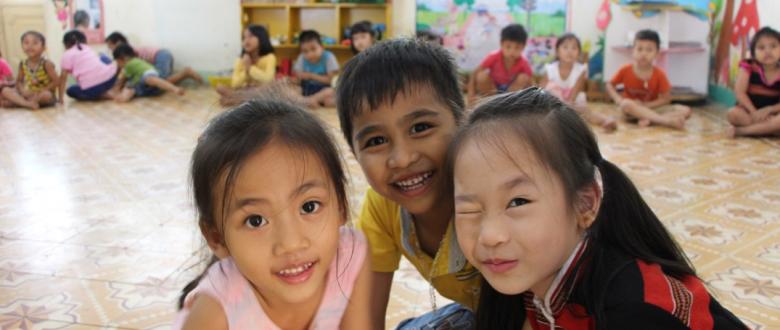
Culture, which consists of gender roles, family structure, language, etiquette, parenting style all formulate values and beliefs and also our expectations of a child’s behaviour.
In the educational environment, teachers need to be aware of how their cultural background may influence their teaching methodologies and their expectations of children. In turn, teachers with such self-awareness are also able to recognise how children’s own cultural and family backgrounds influence their behaviour as well as performance in class. By acknowledging and accepting the importance cultural background plays in the way children participate in education, teachers take the first step in ensuring that all children have equal learning opportunities and can develop to their full potential.
How important is local culture in the preschool environment?
From a very early age, children start to develop a cultural identity which is strongly influenced by their experiences living with their family and in their communities. This rich exposure to culture means that when children start preschool, they bring to class an already formed cultural identity in terms of cultural knowledge and values, skills and importantly, their mother tongue.
In Vietnam, the language of instruction in preschool is Vietnamese, which for most ethnic minority children is a new language. Since Vietnamese is not their mother tongue, children often struggle to communicate with teachers and classmates who may not share their first language. In addition, the children also encounter difficulties in comprehending class activities since many of these may not reflect and connect to any aspects of their cultural identities. Therefore, during preschool, ethnic minority children are confronted with both the second language challenge and non-culturally responsive class activities.
Teachers can help preschool children to overcome these challenges by researching and getting to know the children’s cultural backgrounds and cultural values better. With this understanding, teachers will be able to recognise and appreciate the children’s cultural contributions during class activities. For example, teachers can build a culturally responsive curriculum, by integrating children’s cultural values into the preschool learning environment and learning materials. This kind of culturally responsive practice will make the children feel welcomed and appreciated.
Recommendations for teachers to bring local culture into classes
Over the past few years, preschool teachers have been developed their capacity on using different ways to adapt the national curriculum to the local context. Teachers have started to utilise local materials and local culture such as costumes, house architecture, musical instruments and the like, into class activities. However, to design effective class activities while adapting to the local context is still a challenge for many preschool teachers.
.jpg)
To overcome this challenge, preschool leaders and teachers may start with the following:
- Form groups of parents and teachers who collect cultural materials from a variety of sources. These materials can be folk games, fairy tales, gadgets, or artwork depicting children’s cultural identity. Unlike the once per semester parent-teacher meetings, these parent-teacher group activities should be organised on a more regular basis. Within the group, parents and teachers can discuss equally as peers to find the best approaches to adapt the local cultures into preschool class activities.
- Discuss with children topics and activities around daily life such as cuisine, labour tools, the importance of costumes and traditional musical instruments used on specific occasions, the vocative in use with elders, or even ways to peel fruit. Through these activities, children will be able to develop their Vietnamese language skills in a more familiar context. .
- Teachers may reflect on the classroom’s decorative artwork and learning materials. Asking questions like Do the materials reflect the children’s daily life and culture or are classes decorated by stereotypical images and toys purchased from stores? Do children truly have a chance to play or discover teaching and learning materials prepared by parents and teachers or are those gadgets used for decoration only?
- Preschools should set up and foster an open environment where teachers can share their knowledge and can learn from each other about how to bring local culture into classes and how to build culturally responsive class activities.
Ms. T.T.N from Son Thanh preschool, Son Ha district, in Quang Ngai province, who teaches a class of over 30 pre-schoolers shared her thoughts after attending training courses with VVOB: “My class is a multi-age class, with more than 10 children aged 3 to 4 who have just started schooling, thus many of them are shy, timid and unwilling to communicate. To help them get acquainted with the class environment, I decorate the classroom with familiar materials commonly used in daily life such as traditional bamboo baskets, shovel toys, and some farming products: rice, corn, sugar cane, etc. When children see these familiar images, they feel more comfortable and can participate in class activities. Through interaction with these familiar materials, children will gradually learn Vietnamese based on their contextual knowledge of these things in their mother tongue.’’
This article was aired on giaoducthoidai.vn – the official news site of the Ministry of Education and Training. Click here to read this the original Vietnamese version.




